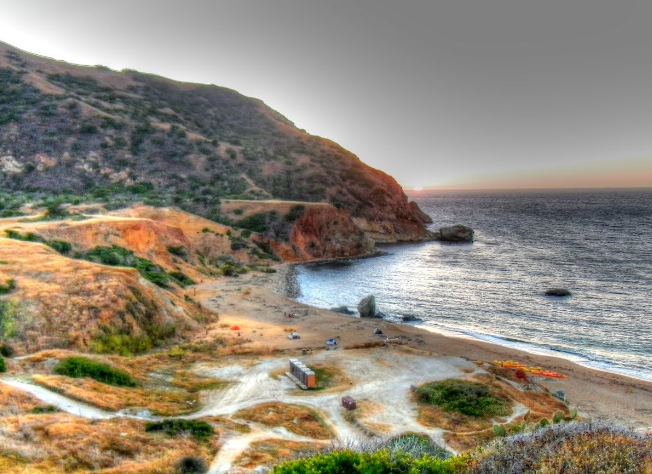Revel in the outdoors with this backpacking California bucket list

A few minutes every morning is all you need.
Stay up to date on the world's Headlines and Human Stories. It's fun, it's factual, it's fluff-free.
If backpacking California is not something you’ve planned to do, you should reconsider. California demands a backpacking bucket list with its 14 million acres of wilderness and varied terrain. While most consider the Pacific Northwest and Colorado the champions of outdoor recreation, California easily outranks them.
Few states lay claim to the same biodiversity and vastness of California. Classic thru-hikes like the Pacific Crest Trail and the John Muir Trail run through the state, but most of us can only manage a week or two of backpacking. Read on for a list of bucket list backpacking California trips to tackle, and a few tips to keep in mind on the way.
General backpacking tips
Research, plan, research, plan, pack, go.
You can never be too prepared when it comes to venturing out into the backcountry. Lack of planning can lead to injury, dehydration and various other misfortunes. Know the route, pack a detailed map, plan to camp next to or near water sources, research permits for the area and don’t forget to haul along your bear canister.
Backpacking checklist
- Permits
- Sleeping bag (we recommend Big Agnes)
- Tent
- 50L or greater backpack (depending on need)
- Thermarest
- Hiking shoes (trail runners should be fine unless you require more ankle support)
- Water report (depends on location and availability)
- Compass (liquid filled capsule for stable operation)
- Map and trail guides
- First aid kit
- Sunscreen/bug spray
- Bear spray
- Bear canister
- Portable phone charger
- Personal locator beacon
- Pocket knife
- Food
- Cookware and utensils
- Fuel
- Water bladder or bottles
- Water treatment system
- Athletic clothes
- Personal items (including hygiene items)
Mount Shasta
If you’re all about mountains and panoramic views, Mount Shasta is for you. Hike to the top with your ski or snowboard gear, spend the night and then fly down the mountain in the morning. The easiest route begins at the Clear Creek Trailhead. Be forewarned that people have died on Mount Shasta. Only experienced hikers, backpackers or climbers should attempt this. Make sure to register at the ranger station to procure your climbing permits before heading out on the trail.
Little Five and Big Five Lakes Loop, Sequoia National Park
Only about 30 miles and under 10,000 feet of elevation gain, this loop runs through pine forests, up switchbacks and past serene lakes. You’ll catch glimpses of Mount Whitney and the Sierra Range. The weather can be unpredictable given the altitude, so be sure to pack for all sorts of climate. The temperature will drop considerably overnight. Intermediate and advanced backpackers will thrive on this journey through Sequoia National Park.
Tuolumne Region, Yosemite National Park
The Tuolumne region of Yosemite National Park boasts wide green meadows, dome-shaped mountains and ample water. The Grand Canyon of the Tuolumne creates beautiful cascades that rush over slabs of granite. Choose from the multiday trek or the famous Half-Dome hike. Do your research because they both offer very different adventures.
Tuolumne Meadows trailheads reach a high elevation, but the flat landscape and lesser-trafficked trail makes for a breathtaking hike with unparalleled views. Fear not when it comes to ravenous bears, as they aren’t accustomed to campers providing them with nightly meals. The campsite on the route provides various amenities such as filtered water, solar-powered outhouses and bear boxes (which means you can dispense with the cumbersome bear canister).
To ensure you have the necessary permit, reserve ahead during peak seasons or arrive early to snag a first-come-first-served permit during less popular seasons.
Joshua Tree
Joshua Tree happens to be the crown jewel of Southern California backpacking and camping. Perfect for beginners and desert-lovers, the arid beauty and flat landscape makes for an easy trip filled with lazy hikes and plenty of spaces to camp.
Backcountry camping in Joshua Tree National Park is allowed in areas that are at least a mile off the road, 500 or more feet away from trails and water sources and not in a day-use only area. Once you get there, head over to a campsite and pitch your tent. You are required to fill out a backcountry registration card with information such as your destination and your license plate number. No fees required.
Trans-Catalina Trail
The Trans-Catalina Trail traverses Catalina Island, an island off the coast of Orange County. Spring and summer offer the best conditions for this California backpacking, though the majority of the trail doesn’t have refuge from the SoCal sun.
The rocky island teems with wildlife. Beware of roaming bison! Be sure to bring along your dive or snorkeling gear to explore the water. Camp on the beach at Parson’s Landing for a peaceful night of waves washing over the sand, or reserve a luxury hotel.
Catalina Island is the perfect mix of backcountry exploration and island vacation. Much of the trail is strenuous, but proximity to civilization lessens the risk for those without backpacking experience.
Book your campsite in advance as Californians love to camp on this island. Weekends require at least two consecutive nights. Make sure to pick up your free permit once you arrive on Catalina Island. Hop on the ferry and begin your next California backpacking adventure.
Have a tip or story? Get in touch with our reporters at tips@themilsource.com




Comments ()